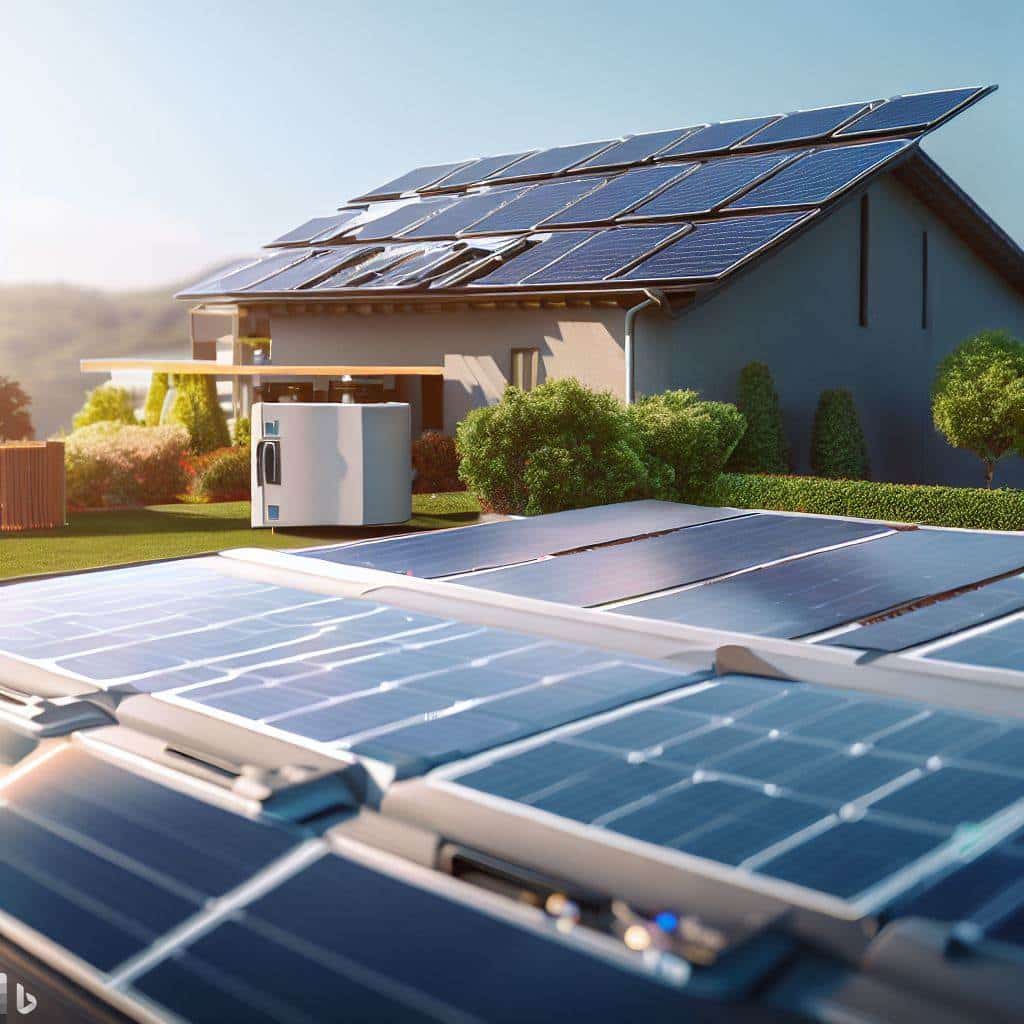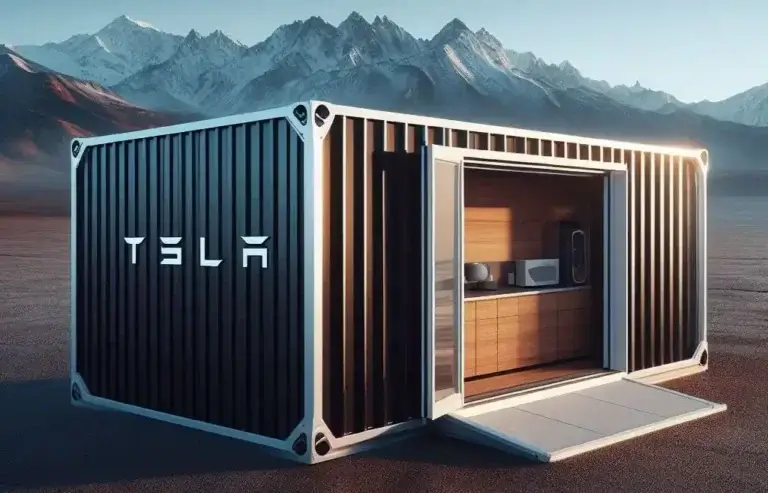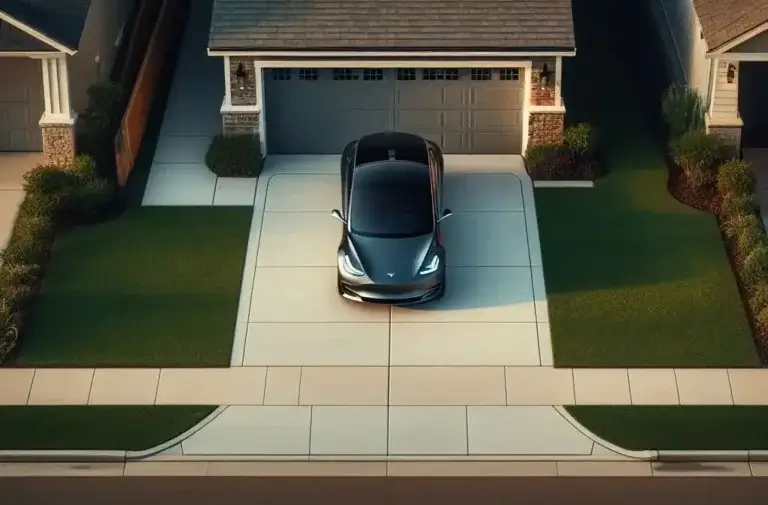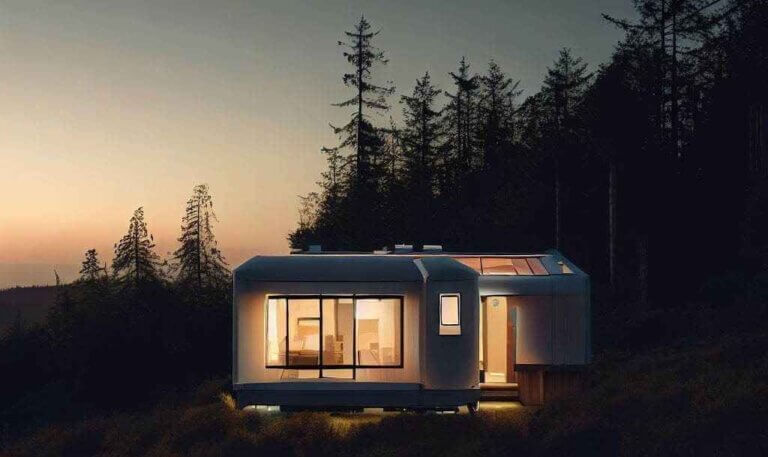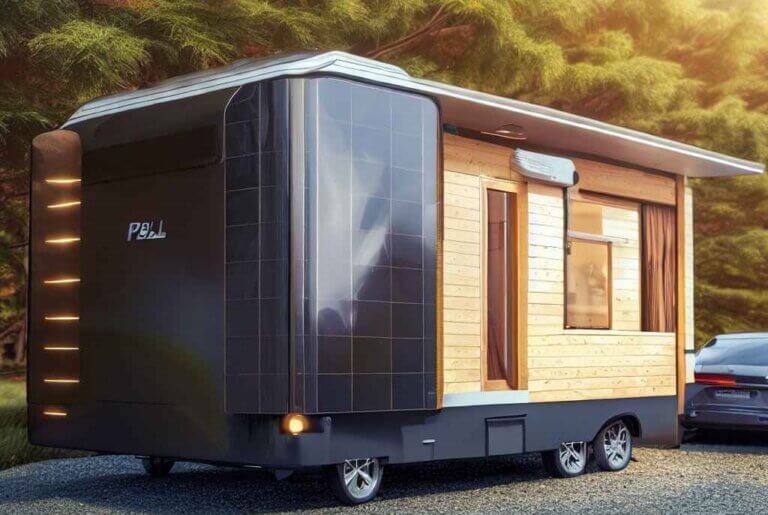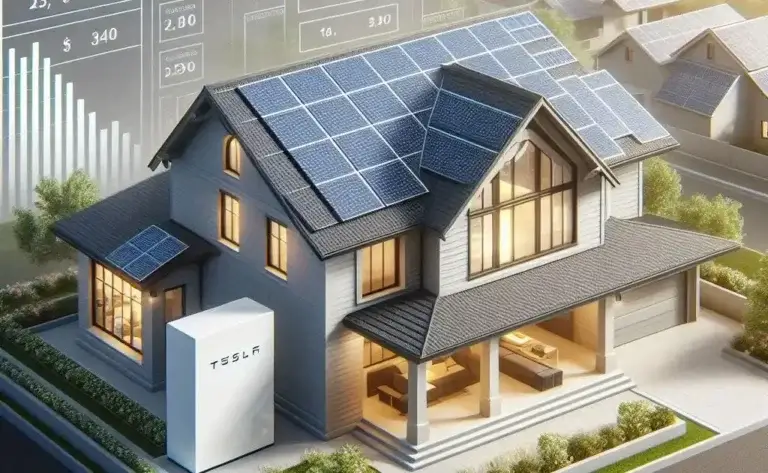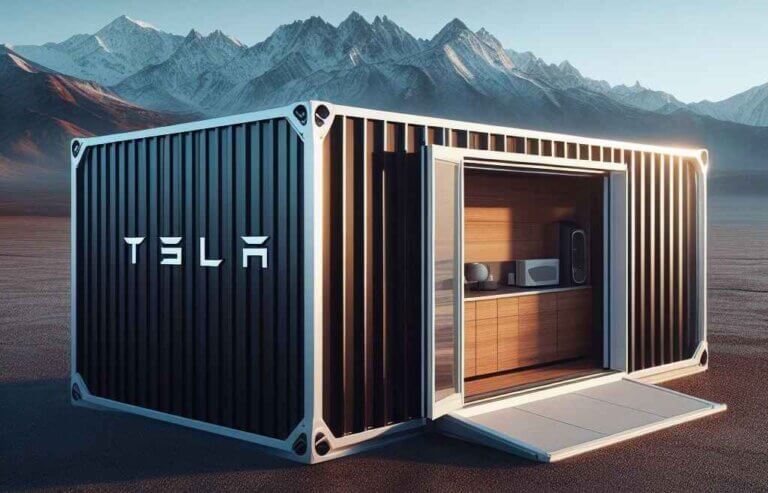10kw Solar System With Tesla Battery
Tesla Solar System is a complete solar energy solution that includes solar panels, a solar inverter, and a battery. The solar panels convert sunlight into electricity, the solar inverter converts the electricity from the solar panels into usable electricity, and the battery stores the electricity for use when the sun is not shining or during a power outage.
The Tesla battery is a lithium-ion battery that is used in Tesla homes and Tesla’s electric vehicles. Tesla batteries are known for their high energy density, long lifespan, and fast charging capabilities. It helps us in residential solar power storage.
A 10kW solar system with Tesla battery can generate up to 10,000 watts of power. This is enough power to run a medium-sized home, including lights, appliances, and electronics. The amount of power that a solar system can generate will vary depending on the amount of sunlight it receives, the efficiency of the solar panels, and the angle and orientation of the solar panel array.
Table of Contents
10kw solar system size
10Kw Solar system size can be in measurement of 595 to 605 square feet. In feet, the 10Kw salary system size can consist of 55.30 ft length and 10.9 ft width.
Moreover, The size of a 10kW solar system will vary depending on the type of solar panels used, the efficiency of the panels, and the angle and orientation of the solar panel array.
10kw Solar System How Many Panels
The Solar Panels required for a 10kw Solar System can be 23 to 33 Solar panels. Moreover, The number of solar panels you need for a 10kW solar system will depend on the wattage of the solar panels you choose.
Let’s say you choose solar panels with a wattage of 350 watts each. This means you will need 10kW / 350 watts/panel = 28.6 panels.
However, you would typically round this up to 29 panels to ensure that you have enough solar panels to generate the desired amount of electricity.
How Much Does A 10kw Solar System Produce
A 10Kw Solar System can produce 30 to 45 kilowatts-hours (KWHs) of energy on a daily basis. This production sums up on average 1250 Kilowatt-hours ( KWHs ) of electricity on a monthly basis. On a yearly basis, the 10Kw solar system can produce from 13,500 to 16,500 kWh of electricity.
Normally, the 10kWh solar system requires 23 to 33 Solar panels (depending and varying on solar plate efficiency and amount of sunlight reached) and it can run AC Units along with the other necessary electrical appliances of the house. So it is fair to say that a 10kwh solar system can produce enough energy to run an average house. Energy consumption can vary by state or many other factors.
10kw Solar System With Tesla Battery
A 10kW solar system with a Tesla battery is a solar system that is connected to the electrical grid and also has a Tesla Powerwall battery. This means that the solar system may send extra electricity back to the grid when it generates more than your home utilizes. It can also store electricity in the battery for use during power outages or when the solar panels are not producing electricity.
The cost of a 10kW (kilowatts-hours ) solar system with a Tesla Powerwall battery will vary based on battery size, battery type, and labor prices in your location. A 10kW (kilowatts-hours ) solar system with a Tesla Powerwall battery will cost between $20,000 and $30,000. Another article for the full cost of the Tesla home system is also published to get the comprehensive guide.
10kw Solar System Grid Tie
A 10kW (kilowatts-hours )solar system grid tie is a solar system that is connected to the electrical grid. This means that the solar system can send excess electricity back to the grid when it is producing more electricity than your home is using. Grid-tie solar systems are the most common type of solar system. They are relatively easy to install and maintain, and they can provide a significant amount of savings on your electricity bill.
When your solar panels produce more electricity than your home is using, the excess electricity is sent back to the grid. The utility company will credit you for this electricity, which can help to offset the cost of your solar system. On the other hand, if your home is using more electricity than your solar panels are producing, the utility company will supply the additional electricity. This is called net metering.
Grid-tie solar systems are a great way to reduce your reliance on the grid and save money on your electricity bill. They are also a good way to contribute to the environment by reducing your carbon footprint.
10Kw Solar System With Battery Backup
A 10kW(kilowatts-hours ) solar system with battery backup is a solar system that is connected to the electrical grid and also has a battery backup system. This means that the solar system can send excess electricity back to the grid when it is producing more electricity than your home is using. It can also store electricity in the battery for use during power outages or times when the solar panels are not producing electricity.
The cost of a 10kW(kilowatts-hours ) solar system with battery backup will vary depending on the size of the battery, the type of battery, and the labor costs in your area. You can expect to pay between $20,000 and $30,000 for a 10kW solar system with battery backup. This will give massive help for residential solar power projects.
10kw Solar System Cost
In general, you can expect to pay for a 10Kw Solar System cost between $15,000 and $20,000 in the United States. However, the 10Kw Solar System Cost for residential solar power be higher or lower depending on the factors mentioned below.
- The Location
- Size of the system
- The type of Solar Panel
- The Inverter
- The Labour Costs
- The Incentives
Tesla Battery For Solar System
The Tesla battery for the solar system is actually a Tesla Powerwall battery, which is a good option for a solar battery system. It is a lithium-ion battery that is designed to store solar energy for use during power outages or times of high energy demand. The Powerwall has a capacity of 13.5 kWh (kilowatts-hours ) and can provide up to 9.6 kW (kilowatts-hours ) of power. It is also compatible with Tesla’s solar panels, so you can create a fully integrated solar and battery system.
Tesla Battery For Solar Panels Cost
Tesla Battery For Solar Panels Cost varies depending on the size of the system and the installation costs. The base price of a single Tesla Powerwall is $9,200. However, the total cost of the system can be higher.
For example, if you need two Tesla Powerwalls batteries for a solar system and the installation costs $3,000, the total cost of the system would be $15,200. However, if you are eligible for a federal solar tax credit of 26%, the total Tesla Battery For Solar Panels Cost reduced to $11,472.
Tesla Battery Life Expectancy
The Tesla Powerwall battery for home solar system has a lifespan of 10 years, with a warranty that guarantees 70% of its original capacity after 10 years. This means that the Powerwall should be able to store at least 70% of the energy it could when it was new after 10 years of use.
If you want to extend the lifespan of your Tesla Powerwall battery, you can follow these tips:
- Avoid charging your Powerwall to 100% or discharging it to 0%.
- Try to keep your Powerwall between 20% and 80% charged.
- Avoid charging your Powerwall in hot or cold weather.
- Use a slow charger whenever possible.
- Keep your Powerwall’s software up to date.
Are Tesla Powerwalls Worth It
Yes, the Tesla Powerwall battery is a good option for residential solar power projects, that want to save money on their energy bills and protect their homes from power outages. Tesla Powerwall batteries can reduce their carbon footprint. However, it is a significant investment, so it is important to weigh the costs and benefits carefully before making a decision.
Can Tesla Powerwall Be Installed Outside
Yes, the Tesla Powerwall battery can be installed outside. It is rated to operate in temperatures from -20°C to 50°C (-4°F to 122°F). However, for best performance, Tesla recommends installing the Powerwall in locations with ambient temperatures between 32°F and 86°F (0°C to 30°C) year-round.
If you are installing the Powerwall outside, it is important to protect it from the elements. The Powerwall should be installed in a dry, well-ventilated area. It should also be protected from direct sunlight and extreme weather conditions. Adding Tesla Powerwall To the Existing Solar System is well explained here.
Tesla Powerwall For Off Grid
Yes, the Tesla Powerwall battery can be used for off-grid applications. However, there are a few things to keep in mind.
- The Powerwall is designed to be used with solar panels, so you will need to have solar panels installed if you want to use the Powerwall off-grid.
- The Powerwall has a capacity of 13.5 kWh (kilowatt-hours), which is enough to power a small home for a few hours. If you have a large home or high energy usage, you may need more than one Powerwall.
- The Powerwall is not designed to be the sole source of power for an off-grid home. You will also need a backup generator in case the Powerwall runs out of power or there is a problem with your solar panels.
Tesla Powerwall Specs
Tesla Powerwall Specs:
- Capacity: 13.5 kWh (kilowatts-hours )
- Power: 7 kW continuous, 9.6 kW peak
- Efficiency: 90% round-trip
- Dimensions: 45.3 in x 29.6 in x 5.75 in
- Weight: 251.3 lbs
- Warranty: 10 years, 70% of original capacity
Tesla Powerwall Dimensions
The dimensions of the Tesla Powerwall battery are 45.3 in x 29.6 in x 5.75 in (1150 mm x 755 mm x 146 mm). It weighs 251.3 lbs (114 kg).
Tesla Powerwall Gateway
The Tesla Powerwall battery Gateway is a device that connects your Tesla Powerwall battery to your home’s electrical system. It also allows you to monitor and control your Powerwall using the Tesla app.
The Gateway has a number of features, including:
- Power monitoring: The Gateway can monitor your home’s energy usage and show you how much energy is being generated by your solar panels and how much is being used by your appliances.
- Backup power: The Gateway can automatically switch to backup power if there is a power outage.
- Remote control: You can use the Tesla app to control your Powerwall from anywhere in the world.
- Firmware updates: The Gateway can automatically download and install firmware updates for your Powerwall.
Tesla Powerwall Review
The Tesla Powerwall battery is a lithium-ion battery that is designed to store solar energy for use during power outages or times of high energy demand. It can also be used to provide backup power for your home.
The Powerwall is compatible with Tesla solar panels, but it can also be used with other solar panels. It is also compatible with the Tesla Energy Gateway, which allows you to manage your energy usage and control your Powerwall from your smartphone.
Here are some of the pros and cons of the Tesla Powerwall battery:
Pros:
- Long lifespan of 10 years, with a warranty that guarantees 70% of its original capacity after 10 years.
- High energy efficiency of 90% round-trip.
- Easy to install and maintain.
- Compatible with Tesla solar panels.
- Can be used for backup power or to store solar energy.
- Can be controlled remotely using the Tesla app.
Cons:
- High upfront cost.
- Not compatible with all solar panels.
- May not be suitable for all homes.
Frequently Asked Questions
What is a 10kw Solar System With Tesla Battery?
A 10kw Solar System With Tesla Battery is a renewable energy solution that combines a 10-kilowatt solar panel array with a Tesla Powerwall or Powerpack battery system. Solar panels generate electricity from sunlight, while the Tesla battery stores extra energy for use during low-light times or as a backup power source. This configuration enables households to harness clean, renewable energy while reducing their dependency on the grid.
How does a 10kw Solar System With Tesla Battery work?
During the day, the system uses solar energy to power the solar panels. The electricity generated is either used to power your house or is stored in the Tesla battery system. When the sun isn’t shining, such as at night or on overcast days, the battery’s stored energy is used to power your home. This configuration offers a continuous and dependable power supply while also increasing energy efficiency.
Can I use a 10kw Solar System With Tesla Battery in an off-grid setup?
Yes, you can use this system for off-grid living. The combination of solar panels and the Tesla battery allows you to generate, store, and use your electricity independently of the grid. It’s a popular option for remote regions or places with only grid power since it provides energy self-sufficiency.
What maintenance is required for a 10kw Solar System With Tesla Battery?
These systems are relatively low-maintenance. Solar panels typically require occasional cleaning to remove dirt or debris, and the Tesla battery system may need firmware updates, which can be done remotely. It’s advisable to have a professional inspection every few years to ensure optimal performance. The parts are designed for durability and have long lifespans.
How much energy can a 10kw Solar System With Tesla Battery generate and store?
A 10kw solar system can generate approximately 10,000 watts of electricity in ideal conditions, but actual production may vary based on factors like sunlight hours and weather. The Tesla battery, depending on its capacity, can store a significant amount of this energy for later use. The exact storage capacity will depend on the model and configuration you choose. Common Tesla Powerwall models have capacities ranging from 13.5 kWh to 14 kWh.

